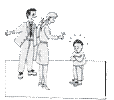Sito di Mario Di Pietro
- Vai ai contenuti
- Sezioni presenti in questa pagina:
Educazione Razionale Emotiva, Mario Di Pietro
Documenti
 Come aiutare il vostro bambino affetto da Mutismo Selettivo
Come aiutare il vostro bambino affetto da Mutismo Selettivo
 Mutismo Selettivo
Mutismo Selettivo
 Bambini che rifiutano il cibo
Bambini che rifiutano il cibo
 Dieta per bambini iperattivi
Dieta per bambini iperattivi
 Bullismo elettronico
Bullismo elettronico
 Disturbi specifici dell'apprendimento
Disturbi specifici dell'apprendimento
 Lo psicologo dell’età evolutiva.
Istruzioni per l’uso
Lo psicologo dell’età evolutiva.
Istruzioni per l’uso
 Scegliere
uno psicoterapeuta
Scegliere
uno psicoterapeuta
 Iperattività ADHD
Iperattività ADHD
 Cos'è il
bullismo
Cos'è il
bullismo
 Gelosia
tra fratelli
Gelosia
tra fratelli
 Depressioni infantili
Depressioni infantili
 Paure infantili
Paure infantili
 Problemi emozionali
Problemi emozionali
 Preparazione al parto
Preparazione al parto
 Depressione adulti
Depressione adulti

Mario
Di Pietro, Dr. Psycol.
 Rational
Emotive Education is an extension of Rational Emotive Behavior Therapy
(REBT), a cognitive behavioral approach to psychotherapy developed by internationally
recognized psychologist Albert
Ellis.
Rational
Emotive Education is an extension of Rational Emotive Behavior Therapy
(REBT), a cognitive behavioral approach to psychotherapy developed by internationally
recognized psychologist Albert
Ellis.
According to Albert Ellis (Ellis, 1962; Ellis & Dryden, 1987), emotional
upset occurs when people attempt to fulfill their goals and encounter an activating
event that blocks the goal. In turn, people have beliefs about this activating
event which influence how they feel and act. Thus, the activating event does
not create the feeling, but beliefs about the event contribute to the emotional
disturbance. These beliefs may be rational ones that result in moderate, healthy
emotions, or irrational beliefs that lead to disturbed emotions and inhibit goal
attainment and satisfaction. Irrational beliefs represent demanding and unrealistic
perceptions of how things should be, statements of blame directed at self and
others, "awfulizing" statements that reflect an exaggeration of the
event, and the inability to tolerate frustration. To eliminate these thinking
patterns, a process known as "disputing" is initiated. Disputing involves
challenging the irrational beliefs through rigorous questioning, with the goal
being to achieve a more flexible, nonabsolutistic viewpoint.
The primary goal of Rational Emotive Behavior Therapy and Rational Emotive Education
is to help people lead happier and self-actualizing lives so that they can truly
get better, rather than simply feel better because emotions are understood and
expressed.
In the school, Rational Emotive Education is implemented through a series of
structural lessons that are experientially based, allowing for children and adolescents
involvement and group discussion. The lesson format includes a short stimulus
activity such as simulation games, role-playing, reading stories and art activities.
Following the activity, students engage in directed discussion about tha content
in the stimulus activity.
Several Rational Emotive Education programs have been developed, and the lessons
have been used extensively throughout the United States, Europe and Australia.
One of the advantages of Emotional Education Programs is that the information
learned from these lessons can be applied to current problems and thus it can
provide a foundation of knowledge and insight to use when future difficulties
arise.
REFERENCES
Ellis, A. (1994). Reason and emotion in psychotherapy. New York: Lyle Stuart.
Ellis, A., & Dryden, W. (1987). The practice of rational-emotive
therapy.
New York: Springer.
Gerald, M., & Eyman, W. (1981). Thinking straight and
talking sense. New
York: Institute for Rational-Emotive Therapy.
Knaus, W.J. (1974). Rational-emotive education: A manual
for elementary school teachers. New York: Institute for Rational-Emotive Therapy.
Pincus, D. (1990). Feeling good about yourself. Carthage, IL: Good Apple.
Vernon, A. (1989a). Help yourself to a healthier you: A
handbook of emotional education exercises for children. Champaign, IL: Research Press.
Vernon, A. (1989b). Thinking, feeling, behaving: An emotional
education curriculum for children. Champaign, IL: Research Press.
Vernon, A. (1989c). Thinking, feeling, behaving: An emotional
education curriculum for adolescents. Champaign, IL: Research Press.
 Per contattarci
Per contattarci